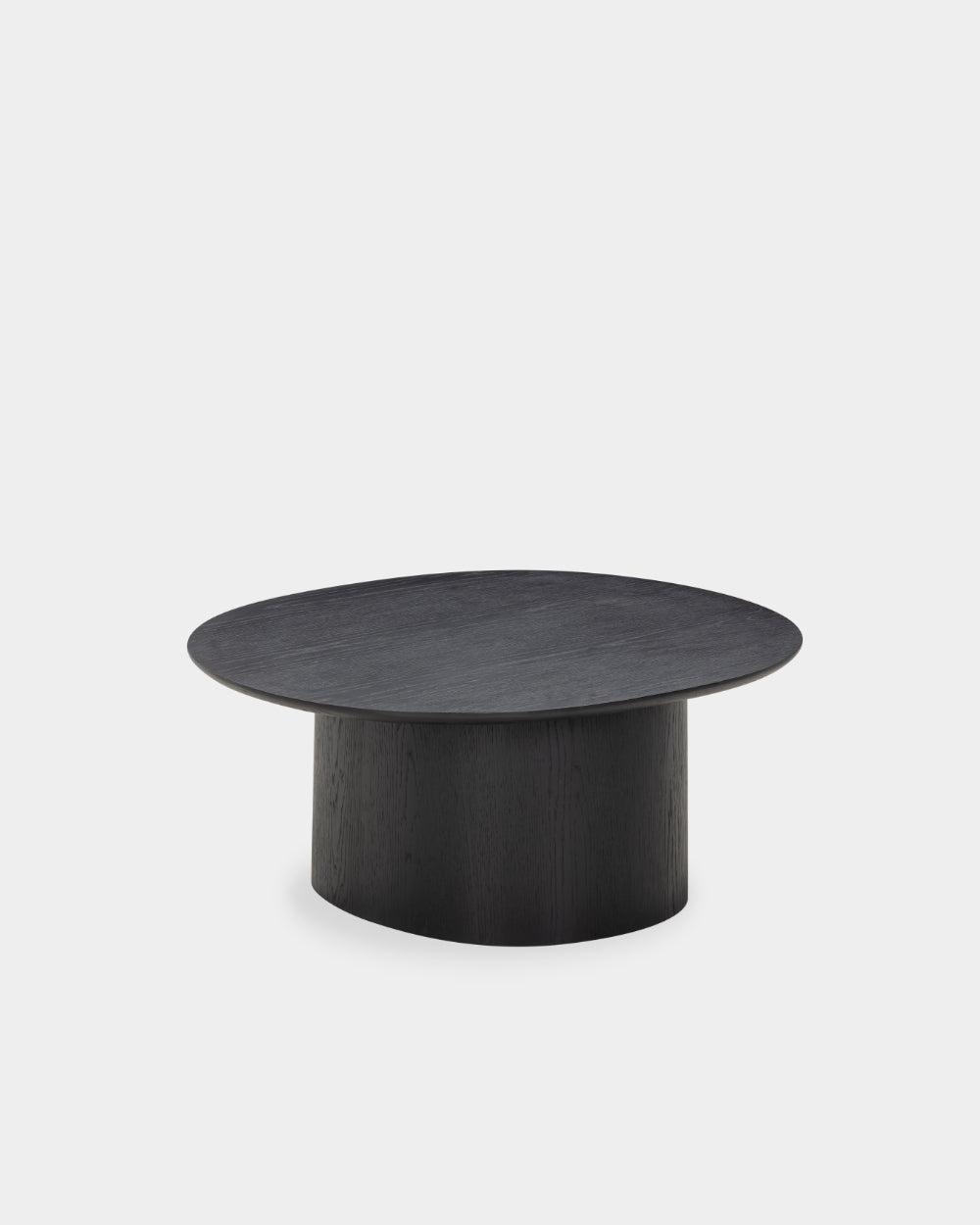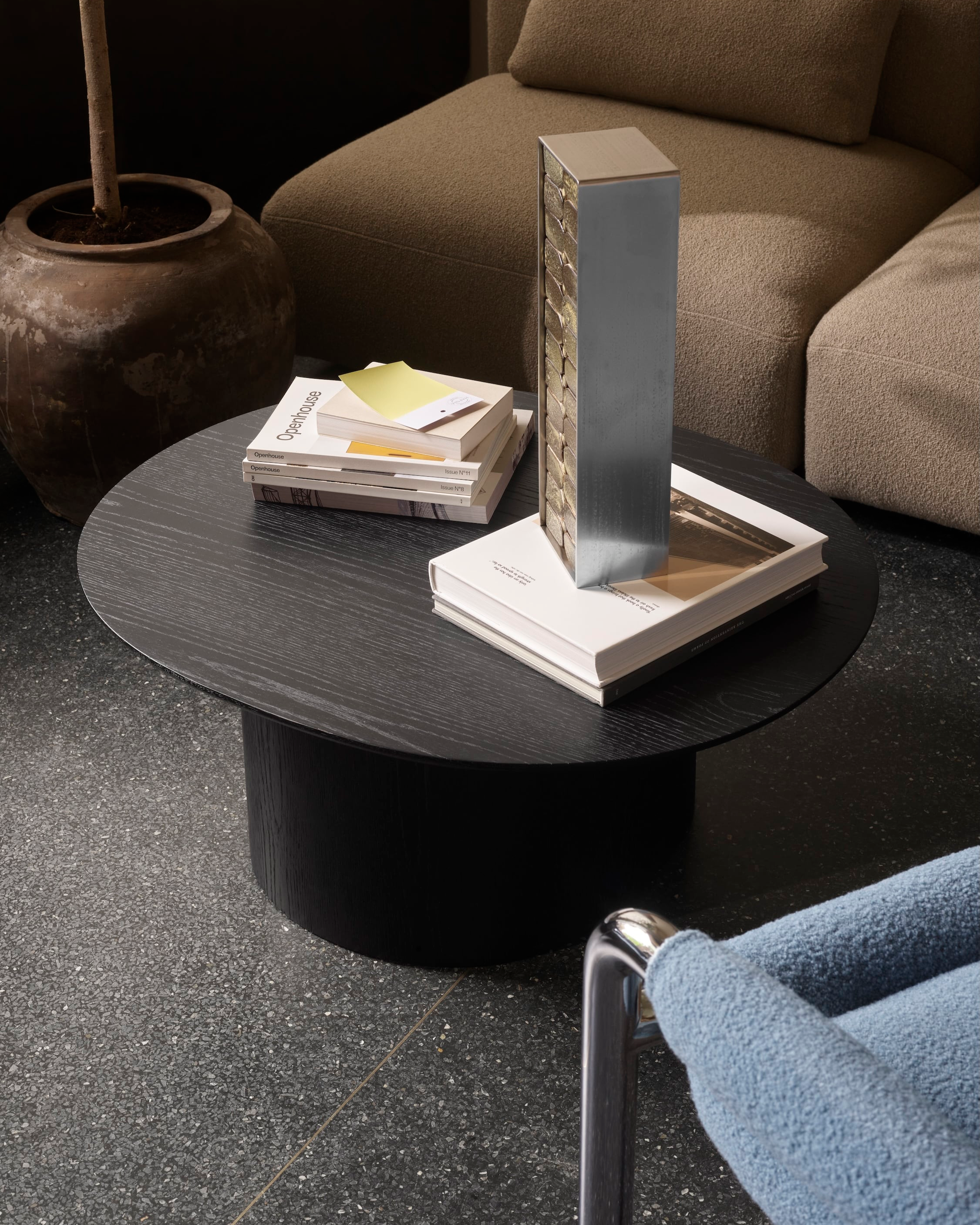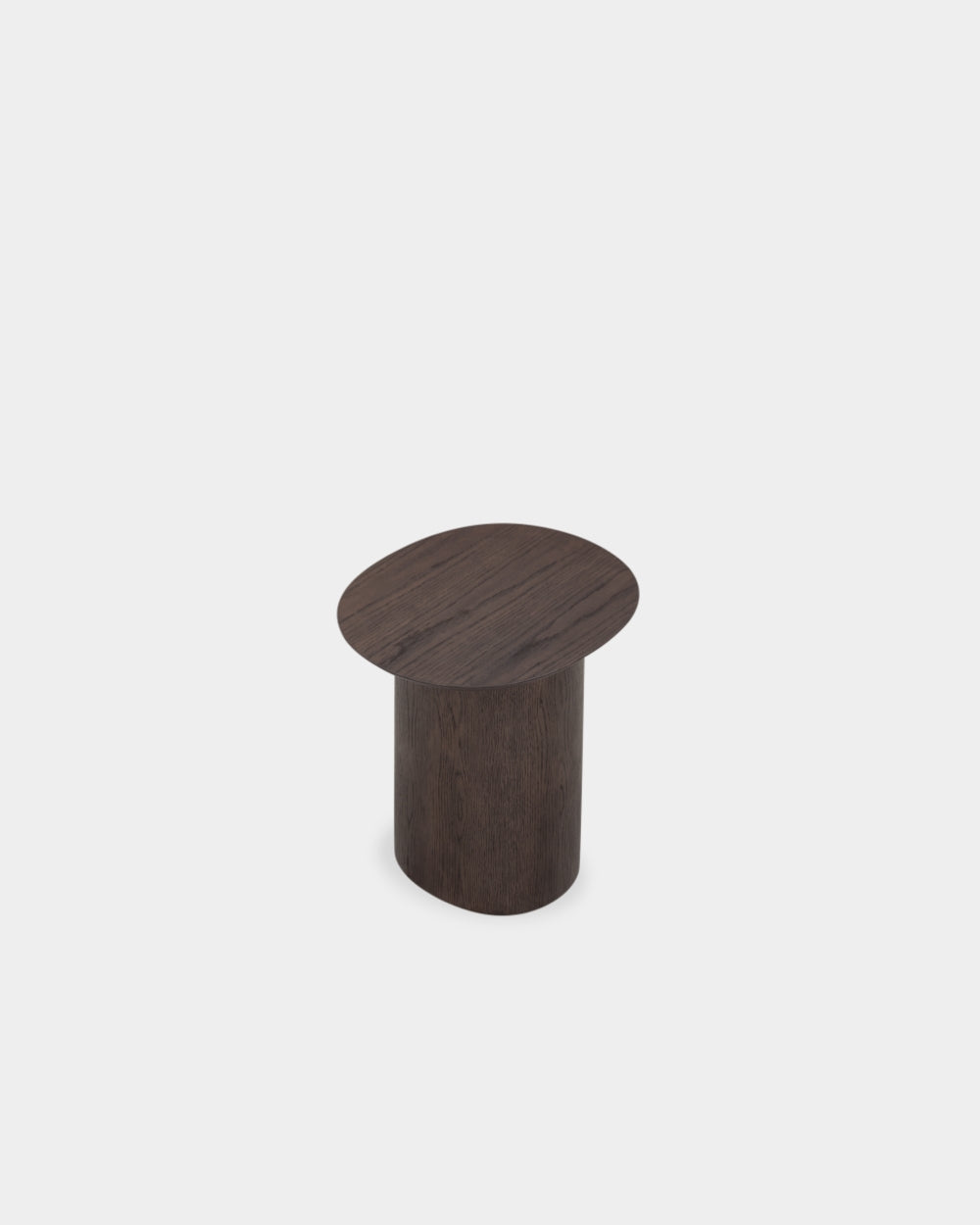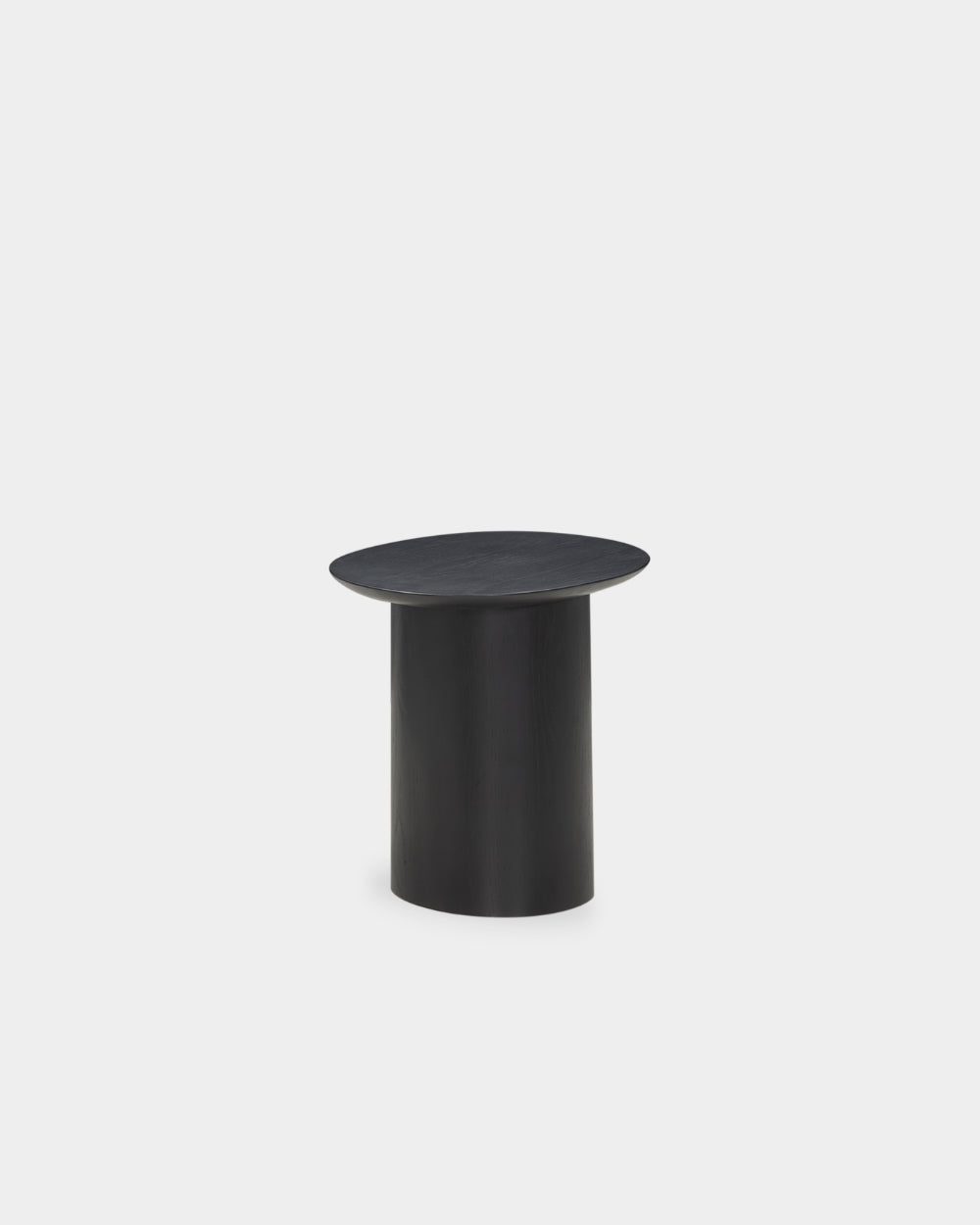JOURNEY
Reflections with John Astbury
As part of Reflections - Wendelbo’s 70th anniversary exhibition during 3daysofdesign - British designer John Astbury joins us for a conversation on the ideas behind Kin, his new table series for the Wendelbo collection.
Rooted in a single shared form, the Kin Tables explore how repetition and rotation can create subtle variation and sculptural rhythm. Rather than aiming for reduction for its own sake, Astbury’s process is guided by intuition - a quiet search for balance, clarity, and a form that simply feels right.
In this interview, he reflects on how inspiration takes shape - through sketches, memories, and moments of stillness - and how colour, restraint, and instinct all play a role in knowing when a design is truly complete.


The Kin Tables are rooted in a shared form. How do you use repetition and reduction as design tools?
I look to find motifs in my work - they can be repetitions or simple standalone figures. While my process often results in reduction, that’s not the main intention. Honing an idea usually involves drawing the same figure over and over - sometimes simplifying, sometimes adding other elements - essentially searching for something that feels right. With Kin, the repetition was taken one step further, reusing the same element in different orientations to create the final result.
Do you find yourself more inspired by looking back or looking ahead? How so?
It’s hard to pin down inspiration - it’s present in both the past and the future. I don’t feel drawn one way or the other; I just want to maintain an openness, a willingness to let things in. There’s a kind of naivety in that, which I try to capture in the work. That said, I think inherently you’re looking toward the future - to build something new, to create. The past is, of course, a source of inspiration, but it’s the future that compels you to make.
"The past is, of course, a source of inspiration, but it’s the future that compels you to make."

When do you do your best thinking, and what does that space look like?
Ideas tend to come in the in-between times - travelling, drifting, doodling. Almost aimless. These liminal headspaces, where I’m unfocused, often provide the catalyst or initial moment. Because of their nature, those spaces are very undefined. The actual work begins after that, in the studio. That space can vary widely - sometimes orderly and controlled, other times completely disorganised - depending on the stage I’m in. But always with music.

What is the most unexpected place you've found inspiration lately?
Inspiration is an awareness - a sense for when the moment arrives. It could be a stick on the ground, a makeup container, a list of mathematical terms, the word drift, a colour. These little moments take shape in relation to others - as contrasts or connections. Recently, the exhibition Go As You Please – Ann-Sofie Back 1998 - 2018, shown at Liljevalchs in Stockholm, captured my imagination.
How do personal memories or cultural references find their way into your work - consciously or intuitively?
Memories and references are vital to the way I work. I’m always collecting - making a constant stream of notes, lists, and sketches as I go. It’s a habitual process, and this background work gives me the context and direction I need. It’s about having the awareness to collect or to note the moment when it arrives. The objects are the result of these scraps of memories, images, words, sounds. The idea may come quickly, but it’s the hours spent beforehand - pulling together lists of words, thoughts, and moments onto paper - that provide the framework that makes it possible.

"It could be a stick on the ground, a makeup container, a list of mathematical terms, the word drift, a colour."

How do you decide when a design is ‘finished’? Is it a feeling, a form, or something else?
I think about balance and finding a moment within the design - like a point in time. The work is to find that moment where it stops. It’s hard to know how much further you need to push before you reach that feeling, but when I get there, that’s when the design is done. It’s a physical feeling for me.

In a piece that’s otherwise calm and reduced, the orange colour introduces a certain energy. How do you see colour shaping the identity of a design?
I think the identity of any design should have layers. Different facets can be brought to the fore through material choices. With the wooden finish, Kin has a calmness and softer feel - but the switch to burnt orange highlights the more graphic nature of the forms and gives a bolder, sharper presence. That play between materiality and form still fascinates me as a designer.
Designs by John Astbury
Brown-stained oak
Black-stained oak
Brown-stained oak
Black-stained oak










